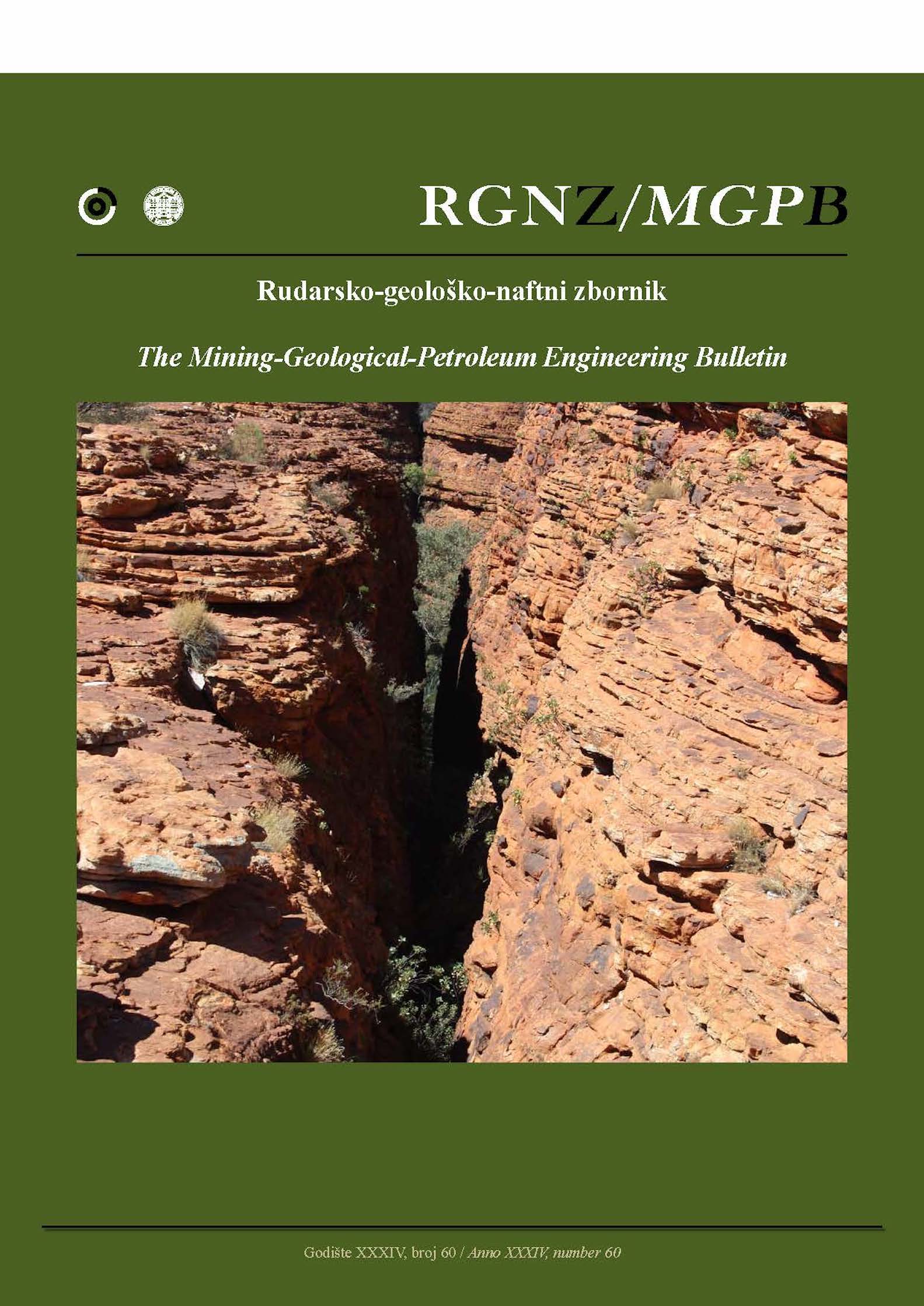Prediction of shear wave velocity and modification of Castagna and Carroll relationships in one of the Iranian oil fields
DOI:
https://doi.org/10.17794/rgn.2022.4.11Keywords:
shear wave velocity estimation, wire-line log data, multi-regression, Caroll equation, Castagna equationAbstract
Shear wave velocity is one of the essential parameters for describing hydrocarbon reservoirs that have several applications in petrophysical, geophysical, and geomechanical studies. Shear wave velocity usually does not exist in all wells, especially in old oil fields. In the current study, two equations of Carroll and Castagna have been modified, and linear and nonlinear multi-regressions were used to estimate shear wave velocity in an oil reservoir in southwestern Iran. Initially, compressional wave velocity and porosity were determined as the most effective wire-line logs on shear wave velocity by comparing their correlations. Then, two equations of Carroll and Castagna were modified. In addition, new equations based on porosity and compressional wave velocity for estimating the shear wave velocity were obtained. Shear wave velocity was estimated by new exponential equations in the wells of the current oil field with excellent goodness of fit by determination coefficients of 0.80 in the whole well, 0.72 in the Ghar-Shale-1, and 0.78 in Ghar-Shale-3 in X-07 well.
Downloads
Published
How to Cite
Issue
Section
License
Copyright (c) 2022 authors and journal

This work is licensed under a Creative Commons Attribution 4.0 International License.
Creative Commons-BY
Authors who publish with this journal agree to the following terms:
In agreeing this form, you certify that:
- You read the ethical codex of the RGN zbornik available at journal web.
- You submitted work is your original work, and has not previously been published and does not include any form of plagiarism.
- You own copyright in the submitted work, and are therefore permitted to assign the licence to publish to RGN zbornik.
- Your submitted work contains no violation of any existing copyright or other third party right or any material of an obscene, libellous or otherwise unlawful nature.
- You have obtained permission for and acknowledged the source of any illustrations, diagrams or other material included in the work of which you are not the copyright owner.
- You have taken due care to ensure the accuracy of the work, and that, to the best of your knowledge, there are no false statements made within it.
- All co-authors of this submitted work are aware of, and in agreement with, the terms of this licence and that the submitted manuscript has been approved by these authors.
Publication licence
You retain copyright in your submitted work, according to journal license policy (CC-BY). By signing this form you agree that RGN zbornik may publish it under the publication licence. In summary the licence allows the following:
Anyone is free:
- To copy, distribute, display, and perform the work.
- To make derivative works.
Under the following conditions:
- The original author must always be given credit.
- The work may not be used for commercial purposes.
- If the work is altered, transformed, or built upon, the resulting work may only be distributed under a licence identical to this one.
Exceptions to the licence
In addition to publishing the work printed under the above licence, RGN zbornik will also enable the work to be visible online.
The journal editorial can change the licence rules anytime but it cannot retroactively restrict author(s) rights.


